1. Basics
1.1. All software accesses and\or stores data
1.2. Database Examples
2. File based systems
2.1. Each program defines and manages is own data
2.2. Limitations
2.2.1. Separation and isolation of data
2.2.2. Duplication of data
2.2.3. Data dependence
2.2.4. incompatible file formats
3. Database approach
3.1. Database
3.1.1. Shared collection of logically related data (and a description of this data), designed to meet the information needs of an organization.
3.1.2. System catalog (metadata) provides description of data to enable program–data independence.
3.1.3. Logically related data comprises entities, attributes, and relationships of an organization’s information.
3.2. DBMS
3.2.1. A software system that enables users to define, create, maintain, and control access to the database.
3.2.2. (Database) application program: a computer program that interacts with database by issuing an appropriate request (SQL statement) to the DBMS.
3.3. Data definition language (DDL).
3.4. Data manipulation language (DML).
3.5. Controlled Access
3.5.1. a security system
3.5.2. an integrity system
3.5.3. a concurrency control system
3.5.4. a recovery control system
3.5.5. a user-accessible catalog.
4. Views
5. Components of DBMS Environment
5.1. hardware
5.2. Software
5.3. Data
5.4. Procedures
5.5. People
5.5.1. Data Administrator (DA)
5.5.2. Database Administrator (DBA)
5.5.3. Database Designers (Logical and Physical)
5.5.4. Application Programmers
5.5.5. End Users (naive and sophisticated)
6. Objectives
6.1. At the the end of the session the student will be able to
6.1.1. Identify the delivery pattern of the course
6.1.2. Identify the assessment requirements of the course
6.1.3. Adopt the required learning behaviours for the module
6.1.4. Define the advantages of using Database Systems
6.1.5. Describe the major components of the DBMS environment
7. Course overview
7.1. Structure
7.1.1. 3 hour lecture + 30 min tutorial + 1 hr online learning
7.2. Assessment
7.2.1. 2 Written assessments due week 10 and week 15
7.2.2. No late submissions
7.2.3. 1 submission
7.2.4. Plagarism
7.3. Learning behaviour
7.3.1. All lessons must be attended on time
7.3.2. Phones turned off
7.3.2.1. 1 warning then in the box
7.3.3. Respect
7.3.4. No eating or drinking in the labs
7.3.5. Ask questions
7.3.6. Take notes
7.3.7. talk to the others
7.3.7.1. social groups
7.3.7.1.1. slack
7.3.7.1.2. whatsapp
